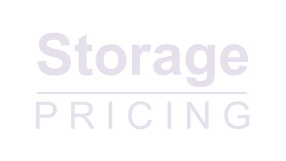Excerpt from Pivot3’s announcement to acquire NexGen Storage
Pivot3 & NexGen Storage: Dynamic Hyper-Convergence
With the added functionality of NexGen’s Quality of Service (Qos) management and dynamic provisioning layer, and our market-leading scalar erasure coding, we will fundamentally change the traditional notion of hyper-convergence and the expectations from storage solutions. Because we’ll allow customers to deploy multiple workloads on hyper-converged infrastructure at the same time, with the confidence that they’ll perform even under extreme demand scenarios, we will effectively enable the first generation of the software-defined data center.
We’re calling this Dynamic Hyper-Convergence.
Our combined technology suites will, for the first time, give customers access to a portfolio of solutions that can apply the right infrastructure and priority to each workload, application, or service according to their business value. The result is a very flexible, agile and dynamic IT infrastructure that can appropriately and differentially process mission critical, business critical and non-critical applications to improve business results for organizations of any size.
We will be doing two things no one has ever done before: applying our patented scalar erasure coding to all-flash arrays and hybrid appliances, and adding QoS and dynamic provisioning to HCI. This level of policy-based management helps customers meet rising demands and accomplish business goals by enabling IT to scale, provision resources, and deliver business services and SLAs, all on the fly.
Dynamic Hyper-Convergence for the Software-Defined Data Center
Combined with NexGen’s proven QoS and dynamic provisioning software, high-performance and hybrid storage and all-flash form factors, Pivot3 will provide the most extensive suite of HCI solutions available in the market. Not only does this move give IT more options to architect solutions to quickly adapt to emerging business challenges, it also creates opportunities to grow into a hyper-converged environment at their own pace. Dynamic HCI extracts the best performance possible from an organization’s existing IT environment, for as long as necessary, offering the agility, simplicity and economics of HCI, while providing an upgrade path to the software-defined data center of the future.
The combined capabilities of Pivot3 and NexGen will knock down walls associated with management silos and islands of hardware and storage designated for specific purposes. We will be able to deliver the benefits of HCI to customers as a utility, shifting away from the need to constantly reconfigure IT for certain purposes to an on-demand, dynamic system that lets customers focus on the critical business applications that drive revenue. Our customers will have the confidence that their underlying infrastructure will support them now and into the future so they can effectively and efficiently manage IT as a business, rather than a cost center.
How We Do It
Previously, because HCI is so new, HCI applications were limited to narrowly defined use cases and standalone architectures.
NexGen’s QoS capabilities were designed to allow the hosting of multiple workloads on a single infrastructure, and to assign each a priority by using policy groups. For instance, in a medical context, VDI applications that display PET and CAT scans would take preference over Exchange email traffic. Now, we are adding this capability to our HCI solutions. Combined with Pivot3’s scale-out capability, this means that more of the data center can be assigned to a single HCI architecture to achieve the improved economics and simplicity that HCI delivers.
Further, we’re taking some of the science of HCI and extending it to NexGen’s storage capabilities. Our scalar erasure coding effectively renders obsolete the notion of 1:1 replication; we use smart algorithms to back up data in a small fraction of the space required for a traditional backup. Apply that to the high-performance storage solutions from NexGen and you get the highest performing, lowest cost-of-ownership storage solutions in the market today.
Even more exciting, we’ll be making these storage solutions available as high-performance modules for our existing HCI platform. That means that HCI can now be applied to additional use cases that were never practical before, such as heavy I/O intensive applications like OLTP.
This is Dynamic Hyper-Convergence, and I’m excited about the advantage it gives our customers.
Introducing the New Pivot3
Pivot3 and NexGen are two like-minded companies, each with a rich history and solid reputation as leaders in our respective markets. Both companies have been offering software-based technology on commodity-based server platforms that lower costs and complexity.
Innovation is all about people – people who can think differently and deliver on that vision. Our founder and CTO Bill Galloway had a vision to change the paradigm of what was being done with hardware and semiconductors with software, paving the way for HCI. Very similarly, John Spiers and Kelly Long of NexGen had a vision of high-performance storage that removes legacy bottlenecks to deliver better economies of scale and to deploy technology in a way that delivers significant value to customers. When you add these two visions, we get a lot of smart people, including three of the most outstanding technical minds in our industry today, and a broadened suite of best in class products. I don’t know anyone in our industry who has that kind of reach and that kind of experience.
